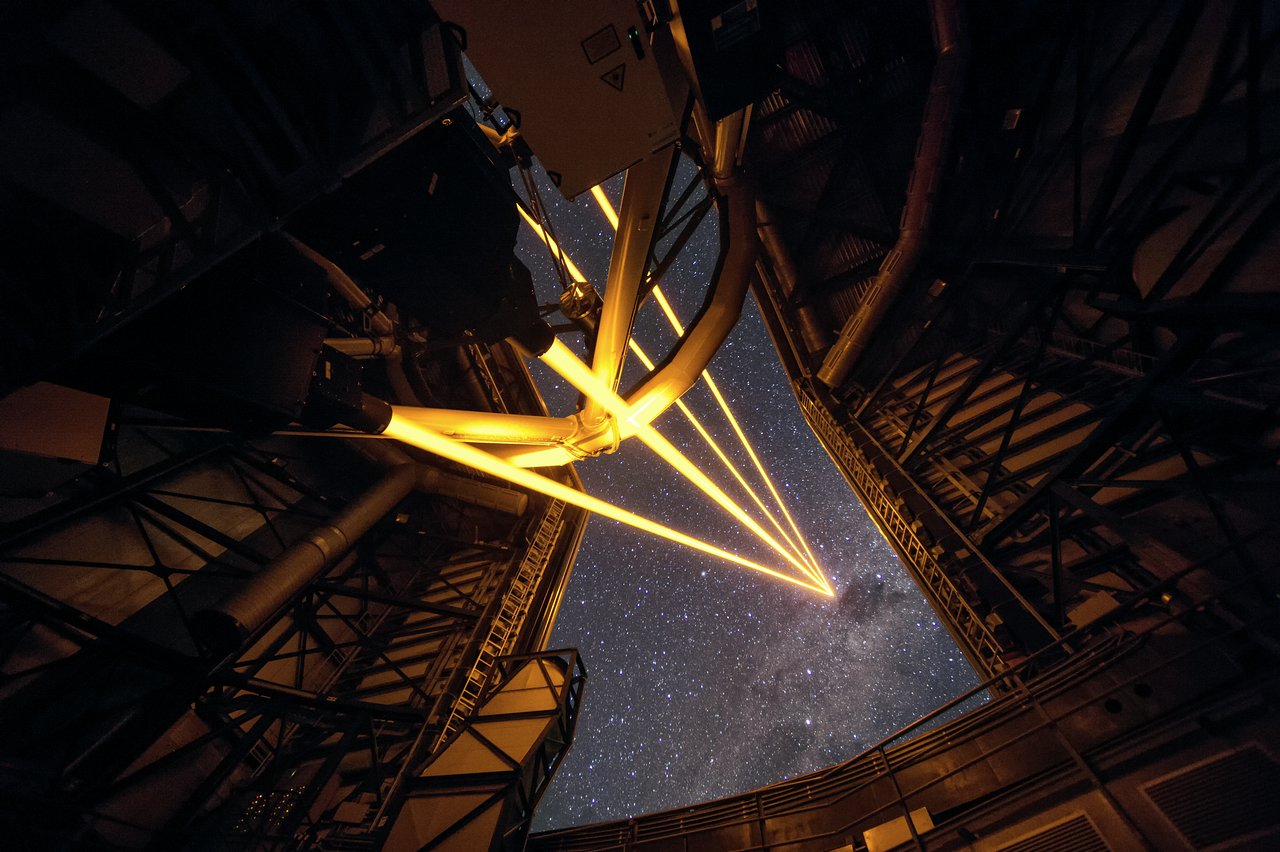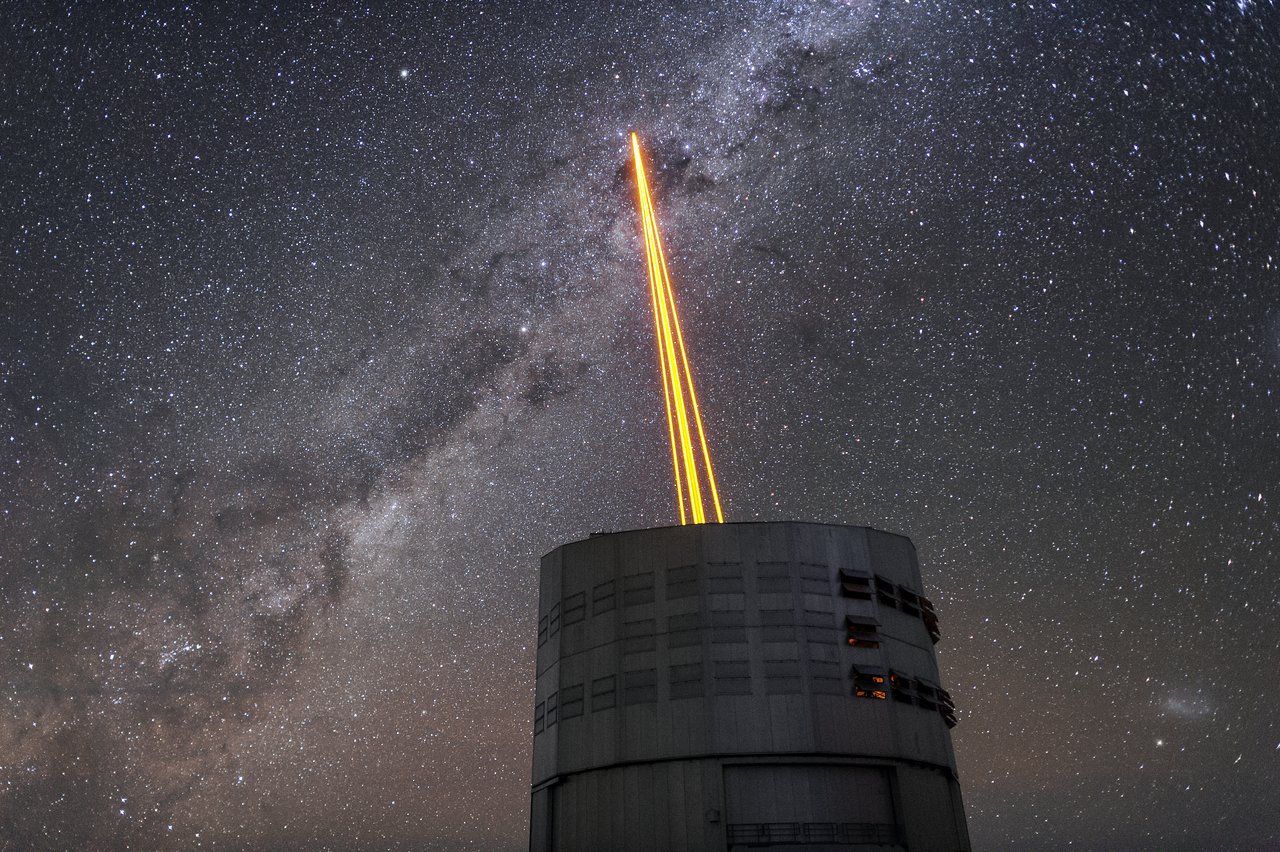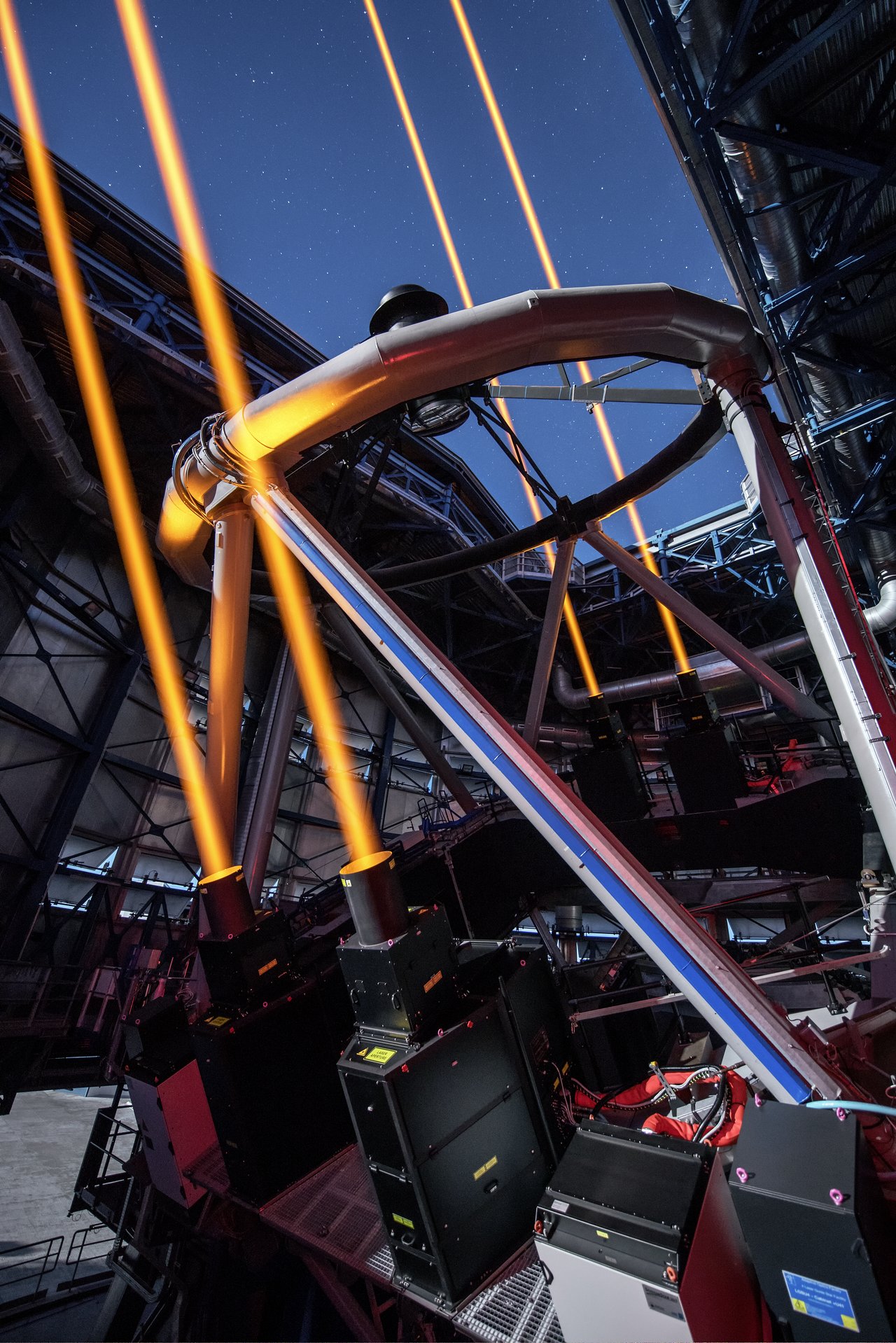Zap! This Awesome Laser-Armed Telescope Is Fully Operational (Photos)

Move over Death Star, there's a new laser-toting installation in town, and this one will give astronomers a better view of galaxies far, far away.
These spectacular views of lasers firing up into the cosmos come from the European Southern Observatory in Chile's Atacama Desert, where scientists activated the new Four Laser Guide Star Facility for the first time this week. The laser system, which switched on Tuesday (April 26), is part of an advanced new adaptive optics system on ESO's Very Large Telescope at the Paranal Observatory.

Adaptive optics systems allow telescopes to adjust the shape of their mirrors to filter out the blurring effects of Earth's atmosphere. The new Four Laser Guide Star Facility, which ESO touted as the most powerful of its kind in the world, fires four 22-watt lasers into the upper atmosphere, where they hit sodium atoms and make them glow like artificial guide stars to serve as a reference for the VLT's adaptive optics system.

"The artificial stars allow the adaptive optics systems to compensate for the blurring caused by the Earth's atmosphere, so that the telescope can create sharp images," ESO representatives wrote in an image description. "Using more than one laser allows the turbulence in the atmosphere to be mapped in far greater detail, to significantly improve the image quality over a larger field of view.

ESO representatives said the techniques developed to build the Four Laser Guide Star Facility will inform work on the adaptive optics system for a giant new telescope, the European Extremely Large Telescope, which is slated to begin operations in Chile in 2024. ESO officials billed the new telescope, with its 128-foot (39-meter) main mirror, as "the world's biggest eye on the sky."
Email Tariq Malik at tmalik@space.com or follow him @tariqjmalik and Google+. Follow us @Spacedotcom, Facebook and Google+. Original article on Space.com.
Get the Space.com Newsletter
Breaking space news, the latest updates on rocket launches, skywatching events and more!
Join our Space Forums to keep talking space on the latest missions, night sky and more! And if you have a news tip, correction or comment, let us know at: community@space.com.

Tariq is the Editor-in-Chief of Space.com and joined the team in 2001, first as an intern and staff writer, and later as an editor. He covers human spaceflight, exploration and space science, as well as skywatching and entertainment. He became Space.com's Managing Editor in 2009 and Editor-in-Chief in 2019. Before joining Space.com, Tariq was a staff reporter for The Los Angeles Times covering education and city beats in La Habra, Fullerton and Huntington Beach. In October 2022, Tariq received the Harry Kolcum Award for excellence in space reporting from the National Space Club Florida Committee. He is also an Eagle Scout (yes, he has the Space Exploration merit badge) and went to Space Camp four times as a kid and a fifth time as an adult. He has journalism degrees from the University of Southern California and New York University. You can find Tariq at Space.com and as the co-host to the This Week In Space podcast with space historian Rod Pyle on the TWiT network. To see his latest project, you can follow Tariq on Twitter @tariqjmalik.









